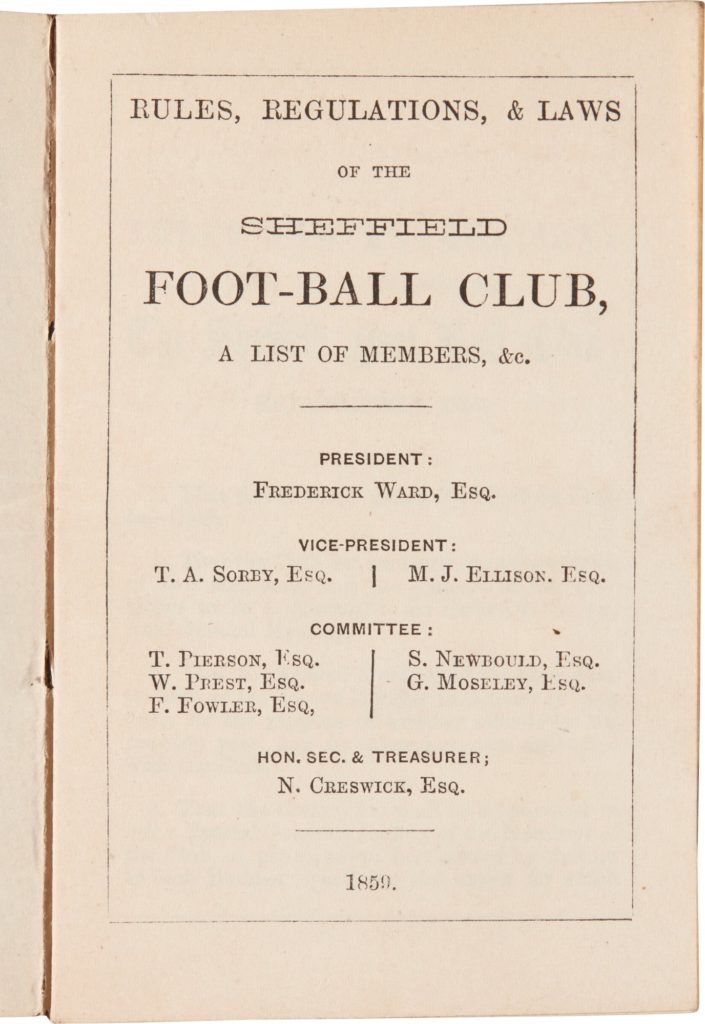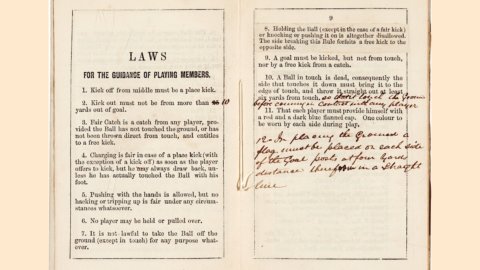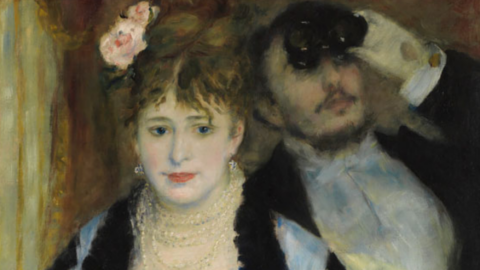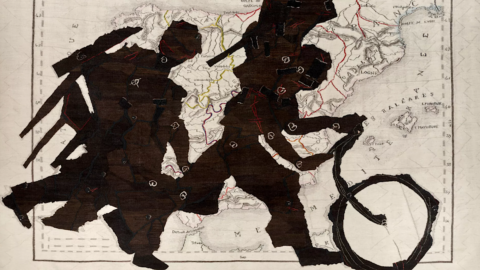Sotheby's is auctioning fine books and manuscripts from 12 to 20 July. For sale is one of only two known copies of the first edition signed in pencil (“William Baker | Sandon Place | Broomhall”), 16 pages, of the football rules printed by the world's first football club.
The auction copy updates the “Read for guidance from members playing” (printed sheet drawn up with revised text for Law 8, handwritten revision of the text for Law 10, and Law 12 added in the manuscript), and is presented by the auction house with ” original wrappers sewn in purple cloth bound in a Victorian album of printed ephemera, letters and clippings, particularly relating to Sheffield and the parish of St Jude's, Moorfields, on religious, sporting and social subjects, approx. 100 pages, plus blanks, 400x 370mm, 1850s-60s, plates greens, title on top cover (“Greville John Chester”), bottom cover missing, loss to spine, top cover detached, with gaps, tears and creases to many of the inserted elements”.
Lo Sheffield Football Club was founded in 1857, before the founding of Association Football by six years, and is recognized by both the FA and FIFA as the world's oldest football club. The club played a crucial role in the development of the modern game – the indirect free kick, corner kick and crossbar were all innovations of the Sheffield game. Furthermore, and perhaps more importantly, the Sheffield game was the first expression of modern football culture. It was in Sheffield that football was first revealed as an unrivaled spectator sport, that the experience of club competition was first experienced and that football fans first revealed the their loyalty and passion.
People had, of course, been kicking footballs for centuries, but the formal rules-based game of football was a Victorian innovation. The game was incubated at public schools and universities: the single copy of a printed pamphlet giving The Laws of the [Cambridge] University Foot Ball Club held at Shrewsbury School was probably printed in 1856 and is the only printed set of rules to precede the current article. The founding of Sheffield Football Club brought the game into the community. The club committee held a series of meetings in October 1858 at which the rules of the game were drawn up and it was agreed that these laws should be printed and a copy given to every member of the club. Prior to the discovery of the current copy, the only known copy of the first printed rulebook was the one that was part of the club's own historical archive. The club's historic archive was sold in these rooms, 14 July 2011, Lot 10, £881.000.
The current copy is signed in pencil by William Baker, the club committee member who signed the original draft rules into the club's minutes on 21 October 1858. Baker was also one of the club's best players and took part, for example, in the club's club match against an FA side in March 1866 at Battersea Park. The current copy of the booklet has also been uniquely revised to keep it up to date with developments in the laws of the game. Most significant is the tightening of the rules against ball handling. The 1858 rules allowed the ball to be "pushed or struck with the hand" but not held (Law 8), but in this copy a printed slip does not permit "striking or thrusting [the ball]". A handwritten note sanctions the throw-in, specifying that the ball must "touch the ground before making contact with any player" (rule 10). A new law (Rule 12) by hand is also added, requiring flags to be placed four yards from each goal post (this was to allow for a short-lived secondary scoring system called a rouge). These revisions must have been made before 1862 when the club issued new bylaws that included these and other changes.

This copy of the Sheffield FC rules was kept in an album compiled by a local clergyman, the Rev. Greville John Chester (1830-92). Chester, whose father was rector in Norfolk, served as curate in various parishes before taking office of St Jude's, Moorfields, Sheffield in 1858. He served the poor parish for five years with exceptional zeal and became famous for his efforts on behalf of the local poor. His health was failing, however, and he resigned in 1863, embarking on a second career as a traveler and collector. Chester's collecting impulses are set forth in this volume, which comprises a wide range of pamphlets and leaflets printed in Sheffield and elsewhere during his tenure on a wide range of religious and social issues.





